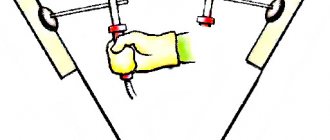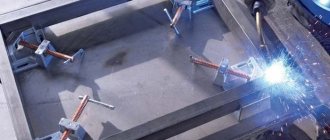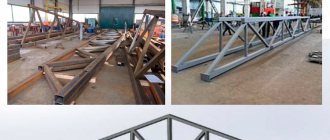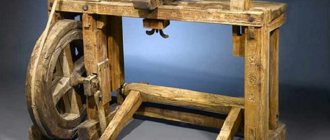An experienced welder knows that the speed and quality of his work largely depend on the materials he uses. It is important not only to have a good and efficient welding machine on hand, but also to choose the right consumables.
Elements that quickly fail include gas welding torches, despite their complex design. They contain parts that require regular replacement for safe operation of the burner.
Usage functions
Burners are used as:
- Welding instruments;
- Lighting elements;
- Heating devices.
Gas distribution nozzles
The nozzles are designed to distribute the gas flow evenly and to protect the welding tip from damage. Nozzle diameters from 9.5 mm to 19 mm are available.
Article: 071.500.190 Nozzle d19mm (MIG MP 26/400/500) SVO2619
A gas distribution nozzle with a diameter of 19 mm is installed on a MIG welding torch and serves to uniformly distribute the gas flow, as well as to protect the welding tip from mechanical impact or accidental contact with the product being welded. Suitable for MP 36/400/500 series burners.
Price: 314 RUR
Article: 071.500.160 Nozzle d16mm (MIG MP 26/400/500) SVO2616
A gas distribution nozzle with a diameter of 16 mm is installed on a MIG welding torch and serves to uniformly distribute the gas flow, as well as to protect the welding tip from mechanical impact or accidental contact with the product being welded. Suitable for MP 26/400/500 series burners.
Price: 314 RUR
Article: 071.500.140 Nozzle d14mm (MIG MP 26/400/500) SVO2614
A gas distribution nozzle with a diameter of 14 mm is installed on a MIG welding torch and serves to uniformly distribute the gas flow, as well as to protect the welding tip from mechanical impact or accidental contact with the product being welded. Suitable for MP 26/400/500 series burners.
Price: 314 RUR
Article: 071.360.190 Nozzle d19mm (MIG MP 36) SVO3619
A gas distribution nozzle with a diameter of 19 mm is installed on a MIG welding torch and serves to uniformly distribute the gas flow, as well as to protect the welding tip from mechanical impact or accidental contact with the product being welded. Suitable for MP 36 series burners.
Price: 295 RUR
Article: 071.360.160 Nozzle d16mm (MIG MP 36) SVO3616
A gas distribution nozzle with a diameter of 16 mm is installed on a MIG welding torch and serves to uniformly distribute the gas flow, as well as to protect the welding tip from mechanical impact or accidental contact with the product being welded. Suitable for MP 36 series burners.
Price: 295 RUR
Article: 071.360.120 Nozzle d12mm (MIG MP 36) SVO3612
A gas distribution nozzle with a diameter of 12 mm is installed on a MIG welding torch and serves to uniformly distribute the gas flow, as well as to protect the welding tip from mechanical impact or accidental contact with the product being welded. Suitable for MP 36 series burners.
Price: 295 RUR
Article: 071.250.180 Nozzle d18mm (MIG MP 25) SVO2518
A gas distribution nozzle with a diameter of 18 mm is installed on a MIG welding torch and serves to uniformly distribute the gas flow, as well as to protect the welding tip from mechanical impact or accidental contact with the product being welded. Suitable for MP 25 series burners.
Price: 168 RUR
Article: 071.250.150 Nozzle d15mm (MIG MP 25) SVO2515
A gas distribution nozzle with a diameter of 15 mm is installed on a MIG welding torch and serves to uniformly distribute the gas flow, as well as to protect the welding tip from mechanical impact or accidental contact with the product being welded. Suitable for MP 25 series burners.
Price: 168 RUR
Article: 071.250.110 Nozzle d11mm (MIG MP 25) SVO2511
A gas distribution nozzle with a diameter of 11 mm is installed on a MIG welding torch and serves to uniformly distribute the gas flow, as well as to protect the welding tip from mechanical impact or accidental contact with the product being welded. Suitable for MP 25 series burners.
Price: 168 RUR
Article: 071.240.170 Nozzle d17mm (MIG MP 24/240) SVO2417
A gas distribution nozzle with a diameter of 17 mm is installed on a MIG welding torch and serves to uniformly distribute the gas flow, as well as to protect the welding tip from mechanical impact or accidental contact with the product being welded. Suitable for MP 24/240 series burners.
Price: 170 RUR
Article: 071.240.125 Nozzle d12mm (MIG MP 24/240) SVO2412
A gas distribution nozzle with a diameter of 12 mm is installed on a MIG welding torch and serves to uniformly distribute the gas flow, as well as to protect the welding tip from mechanical impact or accidental contact with the product being welded. Suitable for MP 24/240 series burners.
Price: 170 RUR
Article: 071.240.100 Nozzle d10mm (MIG MP 24/240) SVO2410
A gas distribution nozzle with a diameter of 10 mm is installed on a MIG welding torch and serves to uniformly distribute the gas flow, as well as to protect the welding tip from mechanical impact or accidental contact with the product being welded. Suitable for MP 24/240 series burners.
Price: 170 RUR
Article: 071.150.160 Nozzle d16mm (MIG MP 15) SVO1516
A gas distribution nozzle with a diameter of 16 mm is installed on a MIG welding torch and serves to uniformly distribute the gas flow, as well as to protect the welding tip from mechanical impact or accidental contact with the product being welded. Suitable for MP 15 series burners.
Price: 108 RUR
Article: 071.150.120 Nozzle d12mm (MIG MP 15) SVO1512
A gas distribution nozzle with a diameter of 12 mm is installed on a MIG welding torch and serves to uniformly distribute the gas flow, as well as to protect the welding tip from mechanical impact or accidental contact with the product being welded. Suitable for MP 15 series burners.
Price: 108 RUR
Article: 071.150.095 Nozzle d9.5mm (MIG MP 15) SVO1595
A gas distribution nozzle with a diameter of 9.5 mm is installed on a MIG welding torch and serves to uniformly distribute the gas flow, as well as to protect the welding tip from mechanical impact or accidental contact with the product being welded. Suitable for MP 15 series burners.
Price: 108 RUR
Type of fuel
The materials used in burners are:
- Gas;
- Liquid fuel;
- Combined materials.
Intake of oxidizer
- With the use of air;
- With oxidizer supply.
What is argon welding
Argon (argon arc) welding is used in cases where it is necessary to avoid contact of the welded metal with oxygen. It is especially good for working with aluminum.
In argon welding, an electrode made of a refractory metal, tungsten, is used. The electrode is located in the center of the torch nozzle, from which a protective gas heavier than oxygen is blown out.
An electric arc is used to heat the metal, and the gas displaces oxygen from the welding area, so that oxidation does not occur. The seam is thin, durable and almost invisible. This is why argon welding is very popular these days.
What is a semi-automatic welding torch?
The design of a welding torch is quite complex and includes many parts such as:
- Holder;
- Nozzle;
- Tip;
- Lever;
- Insulating sleeve.
In the photo you can study in detail the detailed structure of the welding torch.
The elements that are most susceptible to destruction during operation are the nozzle, since it absorbs splashes of material (metal), the handle and the tip.
Principle of operation
The included gas torch for the semi-automatic machine is an actuator for producing a welding seam in a shielding gas environment.
Gas burner for semi-automatic machine
The operating principle is as follows:
- The torch is placed to the base metal at the arc formation distance.
- Before the arc starts, shielding gas is supplied to the welding zone for a few seconds.
- Voltage is supplied to the current-carrying tip, and accordingly to the electrode wire.
- In the welding arc, the electrode wire melts and drops with the gas flow into the weld pool.
- When the torch moves along the elements being connected, a weld seam is formed.
- The protective gas environment ensures a high-quality and clean seam.
During welding work, torch elements are exposed to high temperatures. Particularly affected are the gas nozzle, the current carrying tip and the electrode holder, also called the diffuser and gas divider.
Burner device for semi-automatic machine
- burner base;
- insulating ring;
- electrode holder;
- current carrying tip;
- gas nozzle.
Failure of, for example, the current-carrying tip prevents the supply of welding wire to fill the pool.
Torch for semi-automatic welding machine
The main difference between this burner and the manual version is the ability to cool it. Usually used in places that are rare and difficult to access.
The best tips for such torches are made from tungsten and copper. There are other options for insulating lugs: bronze, copper and graphite alloys.
Polarity when welding semi-automatically
Before welding, you need to decide which polarity you will use.
Plain copper-clad wire that is used with shielding gas should be used with reverse polarity when positive is applied to the wire. Straight polarity is used when the semi-automatic machine has flux wire installed, which is used without gas. In this case, a minus is applied to the wire, and a plus is applied to the metal being welded through the terminal. Thus, maximum heat generation is generated on the wire. This is necessary so that the flux in it can work properly.
If you use the wrong polarity for a certain electrode (in the case of a semi-automatic wire), then the strength of the weld will be poor. If the wrong polarity is used, there will be a lot of spatter, poor welding penetration and the welding arc will be difficult to control.
To change the polarity, you need to open the cover of the semiautomatic device and swap the terminals. Next to the terminals there is a table specifying the order of the terminals.
Welding wire
The semi-automatic machine can use two types of wires: plain copper-coated wire and flux-coated wire.
- Simple wire for semi-automatic welding is used with shielding gas and does not have any additives that can “resist” corrosion and contamination. Therefore, the surface must be prepared carefully.
- The second type of wire has a flux in the center, which, when burned, forms a protective gas. Thus, you can do without a gas cylinder. This wire creates deeper penetration when welding than conventional wire with gas. Flux-cored wire creates a lot of spatter and slag in the welding area, which must be cleaned up after welding is complete. When welding with such wire, minimal surface preparation is required, minor contamination is forgiven. This wire also works well when it's windy outside. For flux-cored welding, the machine must be set to straight polarity (see above).
- The greater the thickness of the metal being welded, the larger the diameter of the wire you need to use, since larger diameter wire conducts more electricity and gives more heat and better penetration.
Burner for argon cooking
The main purpose of argon welding torches is to create a spark for welding. Such devices differ in power, cord length, type of cooling and control, methods of connection to the welding itself.
Gas diffusers
Diffusers evenly distribute the incoming gas to the nozzle.
Article: 071.500.005 Ceramic gas diffuser (MIG MP 400/500) VKO5028
The ceramic gas diffuser for the MIG MP 400/500 torch is installed on the jib of a semi-automatic torch and serves to uniformly distribute the incoming gas into the nozzle.
Price: 46 RUR
Article: 071.360.005 Ceramic gas diffuser (MIG MP 36) VKO3632-2
The ceramic gas diffuser for the MIG MP 36 torch is installed on the jib of a semi-automatic torch and serves to uniformly distribute the incoming gas into the nozzle.
Price: 38 rub.
Article: 071.240.005 Ceramic gas diffuser (MIG MP 24/240) VKO2420
The ceramic gas diffuser for the MIG MP 24/240 torch is installed on the jib of a semi-automatic torch and serves to uniformly distribute the incoming gas into the nozzle.
Price: 39 RUR
How to choose a welding torch
For semi-automatic welding machines, you should choose a heating pad based on some characteristics:
- The current for operation must be the same for welding and torch;
- The outer shell of the burner must be made of material resistant to damage;
- Small size;
- A light weight;
- Resistant to sub-zero temperatures and chemicals.
How to choose the right SG?
There is an opinion that semi-automatic MIG welding requires more current compared to the output power of the welding machine, but this is a misconception, since in this case it will be reflected in the weight of the torch itself and will affect maneuverability.
Therefore, emphasis should be placed on models with a lower current coefficient, lighter and more flexible, but at the same time perfectly coping with the assigned tasks. And there is an explanation for this. First of all, by the maximum current indicated in the product passport, the manufacturer usually means the permissible temperature, above which there is a risk of damage to the handle or cable-hose. Secondly, based on time statistics, it can be argued that operation at full power will be a cyclic process lasting no more than 10 minutes. Based on the above, it can be confirmed that this tool can be freely used at a lower current without compromising it and thereby provide some advantages during work, which affects their efficiency and economy.
Care and operation of gas burners
Be sure to clean the nozzle after each use. Drops of metal should be cleaned off. Since during subsequent work they can interfere with high-quality soldering.
Pay close attention to the contact elements to avoid burnout.
Monitor the formation of an oxide film and remove it in time, or change the elements.
The technical data sheet contains a list of elements that come in the additional kit. It wouldn't hurt to purchase these parts additionally.
How to make a spot welding machine - how to assemble the machine at home with your own handsHow to assemble a simple welding machine at home: drawings of inverter models and step-by-step assembly instructions
Do-it-yourself welding table - step-by-step instructions for manufacturing and assembly (65 photos)
Semi-automatic welding modes - theory and practice
Semi-automatic welding involves the ability to set the settings yourself. A person can change 4 main parameters - melting speed, height of the seam and wire feed, direction of movement of the electrode. Also, craftsmen must be able to adjust welding torches for semi-automatic machines. The mode is selected taking into account the thickness of the metal sheet and GOST. Due to the use of gas, the heat affected area is reduced. Therefore, it is possible to apply several sutures without deforming the metal.
The welder must remember all operating parameters by heart. The following semi-automatic welding modes are distinguished:
- cyclic - use a short arc
- pulse
- spot
- constant circular movement of a metal sheet
- jet movement of the workpiece
To operate in accordance with GOST requirements, an inert gas is required - argon or helium. Sometimes mixtures of these two gases are used. Otherwise, not only does the quality of the weld decrease, but the likelihood of injury and burns to the worker increases. Welding of low-alloy steels is carried out in a carbon dioxide environment
Therefore, it is important to correctly determine the required volume of the cylinder and constantly monitor the gas supply
Guide channels
The guide channel ensures smooth sliding of the wire, reduces the risk of tangling and bending of the wire.
Article: 071.320.550 Guide channel TEFLON 5.5m Yellow (1.2-1.6mm) OMS2030-05
Teflon guide channel is recommended for aluminum wire. Suitable for welding wire with diameter 1.2-1.6mm. Channel length 5.5 m. Compatible with MIG MP 36, MIG MP 400 and MIG MP 500 torches.
Price: RUB 1,301
Article: 071.320.450 TEFLON guide channel 4.5m Yellow (1.2-1.6mm) OMS2030-04
Teflon guide channel is recommended for aluminum wire. Suitable for welding wire with diameter 1.2-1.6mm. Channel length 4.5 m. Compatible with MIG MP 36, MIG MP 400 and MIG MP 500 torches.
Price: 985 RUR
Article: 071.320.350 TEFLON guide channel 3.5m Yellow (1.2-1.6mm) OMS2030-03
Teflon guide channel is recommended for aluminum wire. Suitable for welding wire with diameter 1.2-1.6mm. Channel length 3.5 m. Compatible with MIG MP 36, MIG MP 400 and MIG MP 500 torches.
Price: 850 RUR
Article: 071.220.550 TEFLON guide channel 5.5m Red (1.0-1.2mm) OMS2020-05
Teflon guide channel is recommended for aluminum wire. Suitable for welding wire with diameter 1.0-1.2mm. Channel length 5.5 m. Compatible with torches MIG MP 24, MASTER MIG MP 24 and MIG MP 25, MASTER MIG MP 25, MIG MP 26.
Price: RUR 1,291
Article: 071.220.450 TEFLON guide channel 4.5m Red (1.0-1.2mm) OMS2020-04
Teflon guide channel is recommended for aluminum wire. Suitable for welding wire with diameter 1.0-1.2mm. Channel length 4.5 m. Compatible with torches MIG MP 24, MASTER MIG MP 24 and MIG MP 25, MASTER MIG MP 25, MIG MP 26.
Price: RUR 1,028
Article: 171.220.350 TEFLON guide channel 3.5m Red (1.0-1.2mm) OMS2020-03
Teflon guide channel is recommended for aluminum wire. Suitable for welding wire with diameter 1.0-1.2mm. Channel length 3.5 m. Compatible with torches MIG MP 24, MASTER MIG MP 24 and MIG MP 25, MASTER MIG MP 25, MIG MP 26.
Price: 851 RUR
Article: 071.120.550 Guide channel TEFLON 5.5m Blue (0.6-0.9mm) OMS2010-05
Teflon guide channel is recommended for aluminum wire. Suitable for welding wire with diameter 0.6-0.9mm. Channel length 5.5 m. Compatible with MIG MP 15 and MASTER MIG MP 15 torches.
Price: RUR 1,289
Article: 071.120.450 TEFLON guide channel 4.5m Blue (0.6-0.9mm) OMS2010-04
Teflon guide channel is recommended for aluminum wire. Suitable for welding wire with diameter 0.6-0.9mm. Channel length 4.5 m. Compatible with MIG MP 15 and MASTER MIG MP 15 torches.
Price: RUR 1,077
Article: 171.120.350 Guide channel TEFLON 3.5m Blue (0.6-0.9mm) OMS2010-03
Teflon guide channel is recommended for aluminum wire. Suitable for welding wire with diameter 0.6-0.9mm. Channel length 3.5 m. Compatible with MIG MP 15 and MASTER MIG MP 15 torches.
Price: 847 RUR
Article: 171.300.550 Guide channel STEEL 5.5m Yellow (1.2-1.6mm) OMS1030-05
The guide channel is recommended for use with steel and stainless steel wires. Suitable for welding wire with diameter 1.2-1.6mm. Channel length 5.5 m. Compatible with MIG MP 36, MIG MP 400 and MIG MP 500 torches.
Price: 317 RUR
Article: 171.300.450 Guide channel STEEL 4.5m Yellow (1.2-1.6mm) OMS1030-04
The guide channel is recommended for use with steel and stainless steel wires. Suitable for welding wire with diameter 1.2-1.6mm. Channel length 4.5 m. Compatible with MIG MP 36, MIG MP 400 and MIG MP 500 torches.
Price: 257 RUR
Article: 171.300.350 Guide channel STEEL 3.5m Yellow (1.2-1.6mm) OMS1030-03
The guide channel is recommended for use with steel and stainless steel wires. Suitable for welding wire with diameter 1.2-1.6mm. Channel length 3.5 m. Compatible with MIG MP 36, MIG MP 400 and MIG MP 500 torches.
Price: 199 RUR
Article: 171.200.550 Guide channel STEEL 5.5m Red (1.0-1.2mm) OMS1020-05
The guide channel is recommended for use with steel and stainless steel wires. Suitable for welding wire with diameter 1.0-1.2mm. Channel length 5.5 m. Compatible with torches MIG MP 24, MASTER MIG MP 24 and MIG MP 25, MASTER MIG MP 25, MIG MP 26.
Price: 315 RUR
Article: 171.200.450 Guide channel STEEL 4.5m Red (1.0-1.2mm) OMS1020-04
The guide channel is recommended for use with steel and stainless steel wires. Suitable for welding wire with diameter 1.0-1.2mm. Channel length 4.5 m. Compatible with torches MIG MP 24, MASTER MIG MP 24 and MIG MP 25, MASTER MIG MP 25, MIG MP 26.
Price: 257 RUR
Article: 171.200.350 Guide channel STEEL 3.5m Red (1.0-1.2mm) OMS1020-03
The guide channel is recommended for use with steel and stainless steel wires. Suitable for welding wire with diameter 1.0-1.2mm. Channel length 3.5 m. Compatible with torches MIG MP 24, MASTER MIG MP 24 and MIG MP 25, MASTER MIG MP 25, MIG MP 26.
Price: 199 RUR
Article: 171.100.550 Guide channel STEEL 5.5m Blue (0.6-0.9mm) OMS1010-05
The guide channel is recommended for use with steel and stainless steel wires. Suitable for welding wire with diameter 0.6-0.9mm. Channel length 5.5 m. Compatible with MIG MP 15 and MASTER MIG MP 15 torches.
Price: 316 RUR
Article: 071.100.450 Guide channel STEEL 4.5m Blue (0.6-0.9mm) OMS1010-04
The guide channel is recommended for use with steel and stainless steel wires. Suitable for welding wire with diameter 0.6-0.9mm. Channel length 4.5 m. Compatible with MIG MP 15 and MASTER MIG MP 15 torches.
Price: 257 RUR
Article: 071.100.350 Guide channel STEEL 3.5m Blue (0.6-0.9mm) OMS1010-03
The guide channel is recommended for use with steel and stainless steel wires. Suitable for welding wire with diameter 0.6-0.9mm. Channel length 3.5 m. Compatible with MIG MP 15 and MASTER MIG MP 15 torches.
Price: 200 rub.
Gas or water cooled?
Another key question is which cooling to choose - air or water? It's a bit like buying a motorcycle - air-cooled one or two cylinder or water cooled four cylinder? The fact is that water-cooled systems are often more durable. Any welder who has used a water-cooled welding system will tell you how much more convenient it was to weld with a water-cooled welding torch and how easy it was to handle. Additionally, water-cooled systems not only last longer, but also provide more power. Air-cooled welding torches are not suitable for high currents and long-term operation, while water-cooled torches continue to perform well at currents well above 200 A.
Naturally, the advantages of water cooling come at a price and the cost of water-cooled burners is on average 20-30% higher. There is also the added cost of installing the water cooling system itself. Replacing welding torch wear parts will be part of the ongoing operating costs, so cost is an important factor when choosing between gas or water cooling.
Current strength
Everything is extremely simple. It is enough to remember the maximum current strength of the welding device and consider choosing a torch with an approximately equal indicator.
Let's give a simple example of the possible options from FUBAG. If you have a semi-automatic FUBAG IRMIG 200 SYN, it is best for you to take a burner with a reserve - FB 250. But there are also options where it is worth giving a little less. For example, for FUBAG IRMIG 160 the recommended choice is a 150 A burner (FB 150).
You can see the possible combinations in more detail in the table of recommendations:
| MIG-MAG torch | Svar. current at duty cycle 60%, in CO2 environment, A | Svar. current at duty cycle 60%, in Ar80% + CO2 20%, A | Wire diameter, mm | Suitable for devices |
| FB 150 / air cooling | 180 | 150 | 0,6 – 1,0 | IRMIG 160 / IRMIG SYN 160 Devices from other manufacturers with current up to 160A. |
| FB 250 / air cooling | 230 | 200 | 0,8 – 1,2 | IRMIG 180 / 200 IRMIG SYN 180 /200 INMIG 200 PLUS/200 SYN LCD / 250 T Devices from other manufacturers with current up to 200 A. |
| FB 350 / air cooling | 340 | 290 | 0,8 – 1,2 | INMIG 315 / 350 T DG Devices from other manufacturers with current strength up to 300. |
| FB 400 / air cooling | 400 | 340 | 0.6-1.0 | INMIG 400 T DG Devices from other manufacturers with current up to 400 A. |
| FB 500 / liquid cooling | 500 | 450 | 0.6-1.0 | INMIG 500 DW SYN / 500 DW SYN PULSE Devices from other manufacturers with current up to 500 A. |











